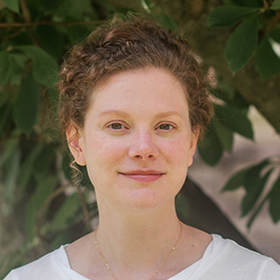

515 Delaware Street SE
Minneapolis, MN 55455
United States
Maureen
Cetera
During embryonic development, cells must be able to sense direction along a body axis to properly shape organs and tissues. When cells lose their ability to sense direction, severe developmental defects arise including open neural tube defects, shortened body axes, and congenital heart defects. We seek to uncover the mechanisms that orient cells with the body axis to ensure proper morphogenesis occurs.
Research statement
Cells coordinate their behaviors across great distances to generate the diverse architecture of body plans and organ shapes found in nature. Disruptions in the signaling pathways that allow cells to sense direction along a body axis give rise to severe developmental defects such as neural tube closure defects, shortened body axes, and congenital heart defects, among others. Significant progress has been made to understand how cells become locally organized, but the mechanisms that organize and direct hundreds/thousands of cells during morphogenesis remain elusive.
Epidermal tissues provide a striking readout of coordinated cell behaviors. Feathers, scales, and fur are all organized in the same direction along an animal’s body following a pattern that is established during embryonic development. The uniform alignment of these structures provides a valuable system to interrogate the signaling mechanisms that transmit directional information across great distances. Remarkably, spontaneous mutations that developed in birds, dogs, guinea pigs, and mice have created animals with reversed feather or fur orientation. We take advantage of these natural variants to identify novel signaling mechanisms that coordinate cell behaviors. We combine this approach with cell culture experiments, live imaging, and quantitative image analysis to reveal how directional signals act across great distances.
Selected publications
- Cetera M, Sharan R, Hayward-Lara G, Devenport D. Evaluating Planar Cell Polarity in the Developing Mouse Epidermis. Methods Mol Biol. 2024;2805:187-201. doi: 10.1007/978-1-0716-3854-5_13. PMID: 39008183.
- Cetera M, Sharan R, Hayward-Lara G, Phillips B, Biswas A, Halley M, Beall E, vonHoldt B, Devenport D. Region-specific reversal of epidermal planar polarity in the rosette fancy mouse. Development. 2023 Sep 1;150(17):dev202078. doi: 10.1242/dev.202078. Epub 2023 Sep 7. PMID: 37622728; PMCID: PMC10499026.
- Cetera M, Leybova L, Joyce B, Devenport D. (2018) Counter-rotational cell flows drive morphological and cell fate asymmetries in mammalian hair follicles. Nature Cell Biology, 20:541-552.
- Cetera M, Leybova L, Woo FW, Deans M, Devenport D. (2017) Planar cell polarity-dependent and independent functions in the emergence of tissue-scale hair follicle patterns. Developmental Biology, 428(1):188-203.
- Barlan K, Cetera M, Horne-Badovinac S. (2017) Fat2 and Lar define a basally localized planar signaling system controlling collective cell migration. Developmental Cell, 40(5):467-477.
- Cetera M, Lewellyn L, Horne-Badovinac S. (2016) Cultivation and live imaging of Drosophila ovaries. In Drosophila: Methods and Protocols: 2nd ed. (Ed. Christian Dahmann), Methods in Molecular Biology series. New York, NY: Humana Press.
- Cetera M, Horne-Badovinac S. (2015) Round and round gets you somewhere: collective cell migration and planar polarity in elongating Drosophila egg chambers. Current Opinion in Genetics and Development, 32:10-15.
- Cetera M*, Ramirez-San Juan GR*, Oakes PW, Lewellyn L, Fairchild MJ, Tanentzapf G, Gardel ML, Horne-Badovinac S. (2014) Epithelial rotation promotes the global alignment of contractile actin bundles during Drosophila egg chamber elongation. Nature Communications, 5:5511.
- Lewellyn L, Cetera M, Horne-Badovinac S. (2013) Misshapen regulates integrin levels to promote epithelial motility and planar polarity in Drosophila. Journal of Cell Biology, 200(6):721-729.
Education and background
- Pathway to Independence (K99/R00), Eunice Kennedy Shriver National Institute of Child Health & Human Development of the National Institute of Health (2019-2024
- Postdoctoral Research Scholar- Princeton University
- Ph.D., Development, Regeneration and Stem Cell Biology- The University of Chicago, 2015
- B.S., Molecular and Cellular Biology- University of Illinois at Urbana-Champaign, 2005